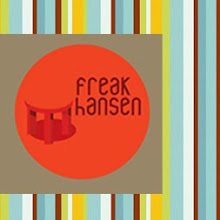Frank Hornby established Meccano in 1901 to make toy erector sets (Dalefield no date). Some other early products were "British Village" houses, church, bridge, and mill with villagers and a canvas landscape with roads and stream in natural colours.
Prior to 1933, Meccano had made many types of tin plate and other metal cars, like the Morgan and BSA three-wheelers, mostly in kit form (Interesting 1934, pp. 306–307). In 1933 Meccano Ltd issued a series of railway and trackside accessories to complement their O scale (1/45) Hornby Railways model train sets (Force 1988, p. 6; Ramsay 1933, p. 88). These were first called "Modelled Miniatures", but in the April 1934 issue of The Meccano Magazine were given the name Dinky Toys for the first time (Meccano Dinky 1934 p. 332).
The first model car available individually was numbered 23a which was a sports car based on an early MG. Then, seven vehicles were introduced (six numbered 22 a through f) including a sports car, a sports coupe, a truck, a delivery van, a farm tractor, and a tank. These were produced alongside model track workers, passengers, station staff and other O scale trackside accessories (Meccano Dinky 1934 p. 332). The cars were basic representations rather than identifiable marques and had die-cast metal bodies, tin plate bases and wheels with rubber tyres. Later, Frank Hornby, owner of Meccano, expanded the range to include die-cast ships and aeroplanes. These retailed for four shillings. It has been said that the name came from a friend of one of Frank Hornby's daughters, and was likely derived from the Scottish "dink" meaning neat or fine, but according to Merriam-Webster the word has meant "overly or unattractively small" since the 1880s (McCullagh 2008; Merriam-Webster 2011).
Casting from impure alloys, which causes zinc pest making metal crack and crumble prematurely was much more common before the war. This was one of the reasons that it is rare to find toys surviving in good condition from this period today (Ramsay 1993, p. 88). Some early castings have survived in numbers, while it is difficult to find others without some form of damage such as the 28 Series vans. It is believed that lead from Hornby train production, as well as lead ties from sacks in the factory found their way into the metal, corrupting it.
[edit]Vehicles
By December 1935 there were around 200 different products in the Dinky range even including dolls house furniture (Ramsay 1993, p. 135). The first model cars were generic representations of vehicle types and were available individually from trade packs of 6. Models would not be available in individual boxes until 1952. In 1935 a new series was introduced which featured accurate likenesses of specific vehicles.
Series 30 included:

